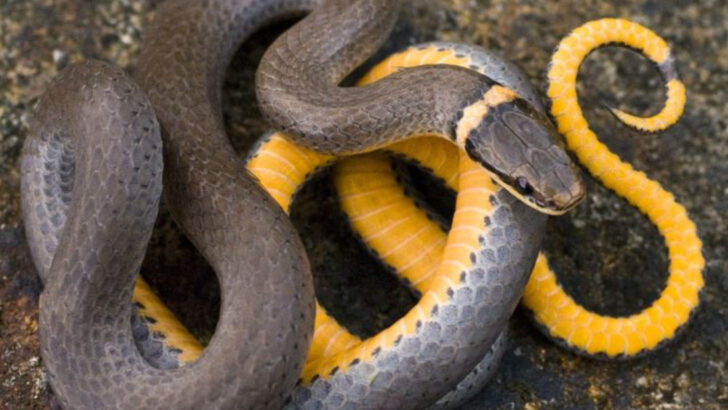Snakes in your backyard? Don’t panic! While they might send a chill down your spine, many of these creatures are harmless and even helpful. In fact, they play a crucial role in keeping pests in check, helping balance the ecosystem right outside your door.
Not all snakes are deadly villains lurking in the grass—some are simply misunderstood. The non-poisonous species might not be as intimidating as you think. In fact, they might just be your backyard’s unsung heroes, quietly doing their part to control rodent populations.
In this post, we’ll introduce you to 14 non-poisonous snakes that could be slithering through your yard. From their unique patterns to their favorite hiding spots, we’ll help you identify these fascinating creatures and learn why they’re more friend than foe. Ready to embrace your backyard’s natural pest control team?
Garter Snake
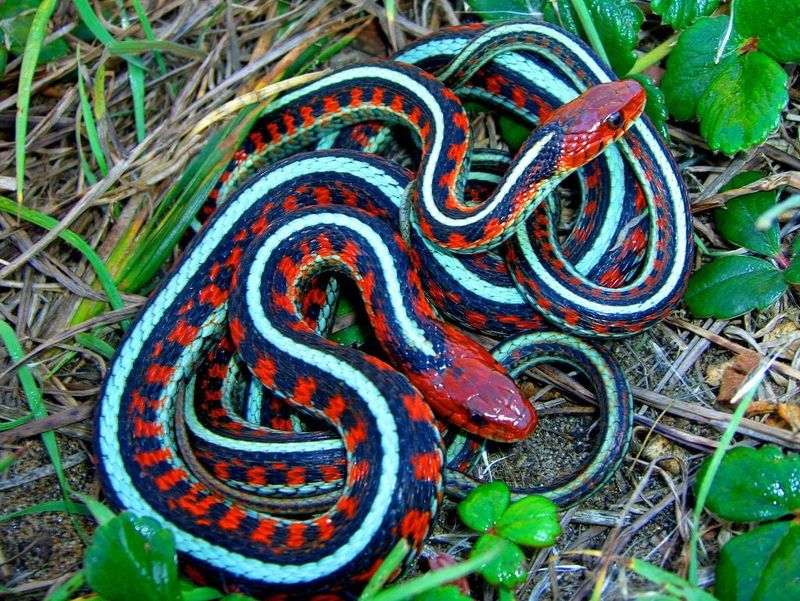
The garter snake, often seen in gardens, is known for its vibrant stripes running the length of its body. With colors ranging from green to brown, these snakes are gentle and non-aggressive.
Garter snakes are often found basking in the sun or hiding under rocks. They are harmless to humans and can help keep your garden free of pests like slugs and insects.
If you spot one, admire its graceful movements from a distance. They play a crucial role in the local ecosystem, balancing the population of small pests.
Eastern Rat Snake
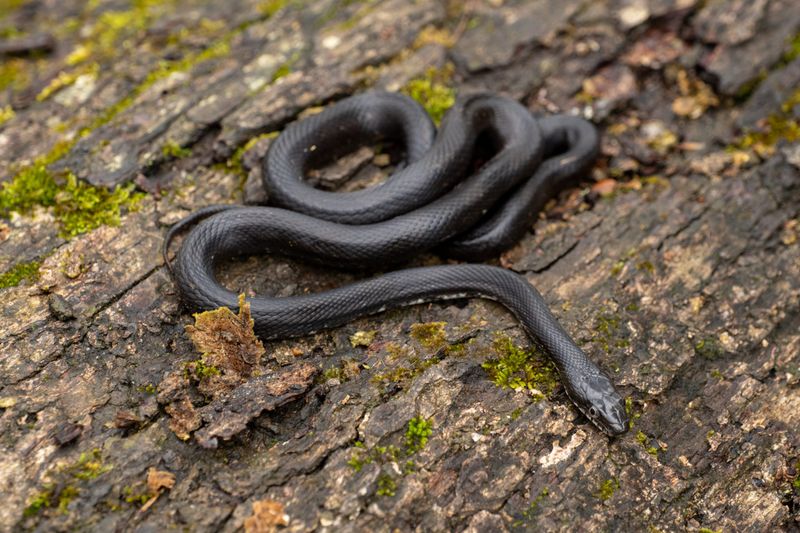
Eastern rat snakes are a common sight in wooded areas and backyards. These snakes are impressive climbers and are often found in trees or old barns.
They’re non-poisonous and beneficial, as they control rodent populations. Usually black with a shiny appearance, they can grow quite large, which often startles people.
Don’t be alarmed if you see one; their presence indicates a healthy ecosystem. Watching them glide effortlessly through their habitat can be quite mesmerizing.
Milk Snake
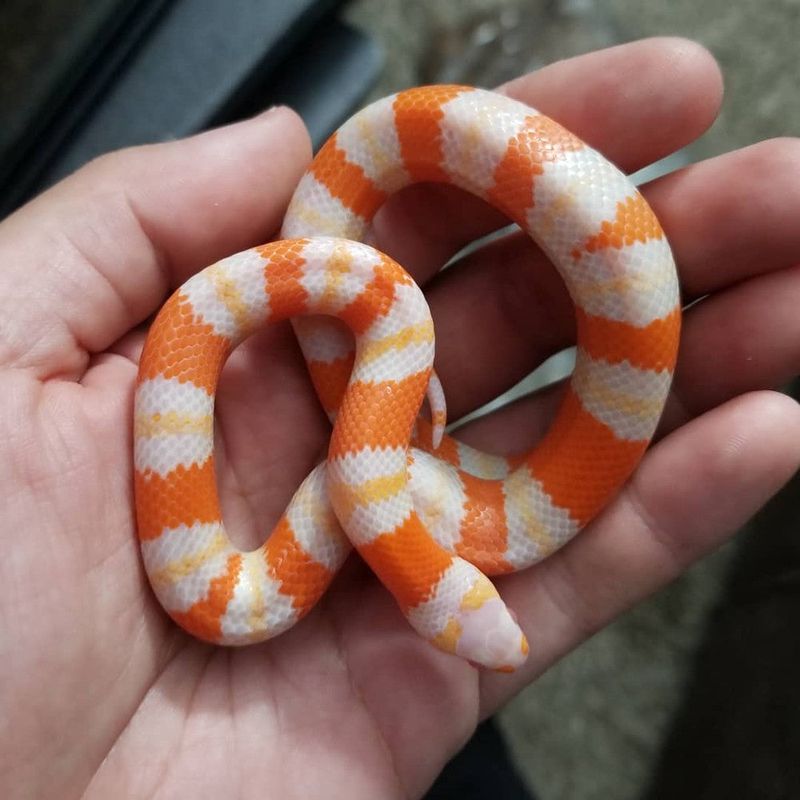
Milk snakes are another non-poisonous species often mistaken for the venomous coral snake. Their striking red, black, and white bands make them stand out.
Found in fields and forest edges, these snakes are shy and prefer to avoid humans. They feed on small mammals and reptiles, contributing to the ecological balance.
Their beautiful coloration is a natural defense mechanism. If you encounter one, enjoy its beauty from afar, as they are an essential part of nature’s tapestry.
Ringneck Snake
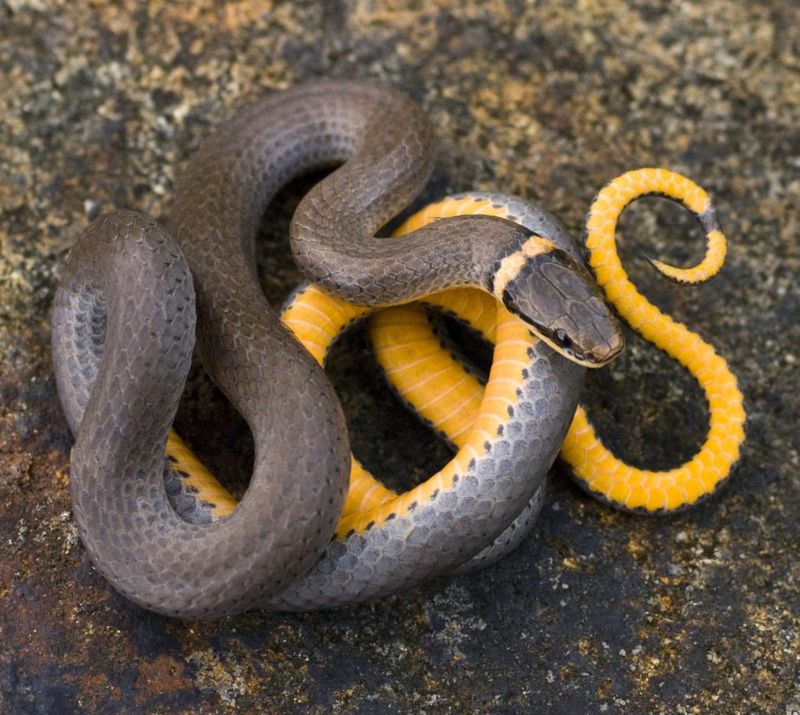
The ringneck snake is small and secretive, often found under logs and rocks. True to its name, it features a distinctive yellow or orange band around its neck.
These snakes are nocturnal and rarely seen during the day. They feed on earthworms and small amphibians, making them beneficial garden visitors.
Their charming appearance and shy nature make them a delightful find. Spotting a ringneck snake is a reminder of the hidden wonders in your backyard.
Black Racer
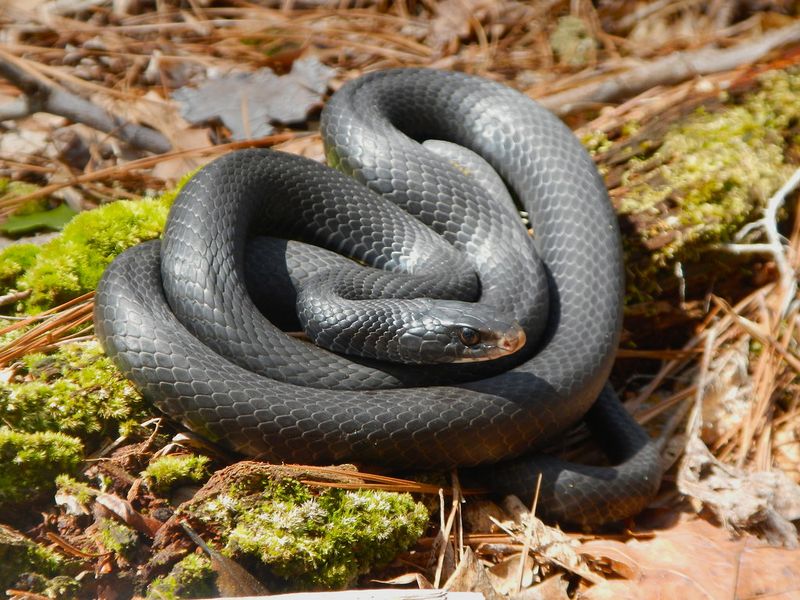
Black racers are known for their speed and agility. These slender, black snakes are often found in open areas like fields and gardens.
Despite their intimidating appearance, they are non-poisonous and play a vital role in controlling pest populations. They feed on rodents and frogs.
Observing a black racer in action is a sight to behold, as it swiftly maneuvers through the underbrush. These snakes are a testament to the diverse wildlife around us.
Northern Water Snake
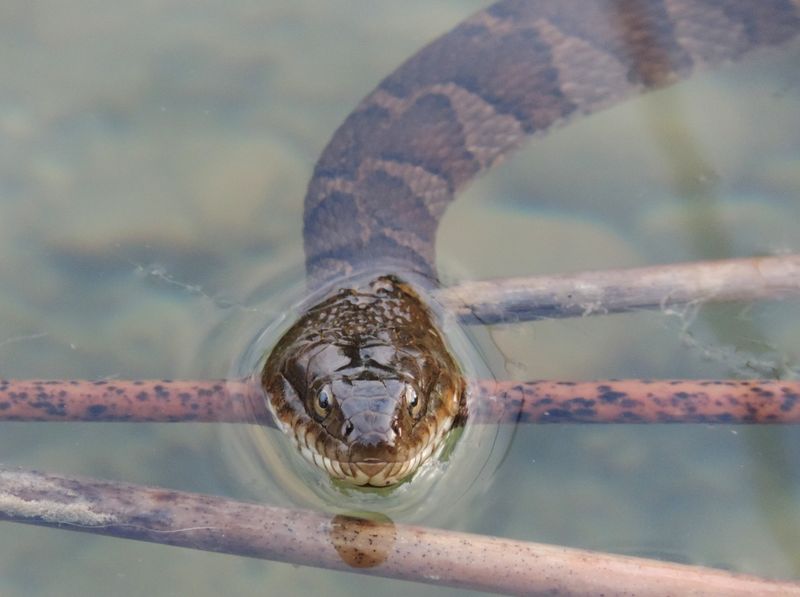
The northern water snake is frequently found near water bodies, such as ponds and streams. Its brown and gray markings help it blend with the surroundings.
These snakes are excellent swimmers and can often be seen basking on rocks or logs. They feed on fish and amphibians, playing a crucial role in aquatic ecosystems.
Their presence is a sign of a healthy water habitat. Watching them glide through water is a graceful display of nature’s design.
Corn Snake
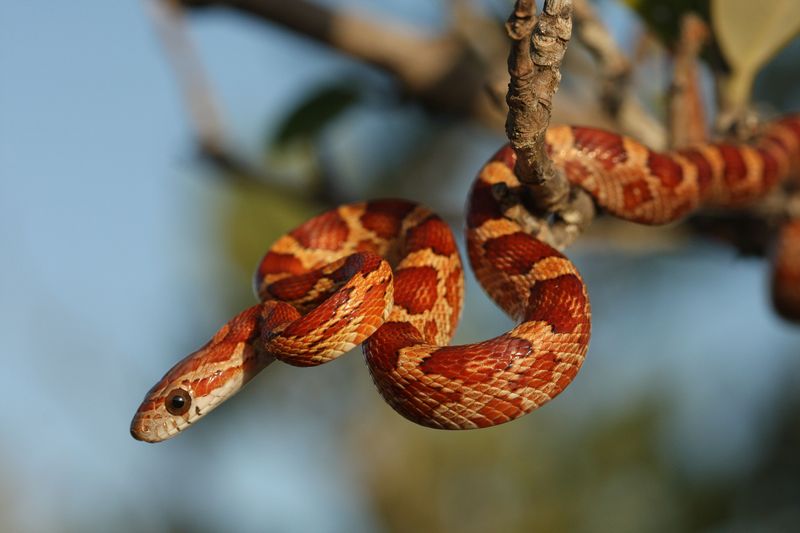
Corn snakes are known for their striking orange and red scales, resembling the kernels of corn. They’re often found in fields and abandoned buildings.
These snakes are non-poisonous and docile, making them popular pets. In the wild, they help control rodent populations, benefiting agriculture.
Admiring a corn snake’s vibrant colors is an experience in itself. Their docility and beauty make them a cherished part of wildlife.
Rough Green Snake
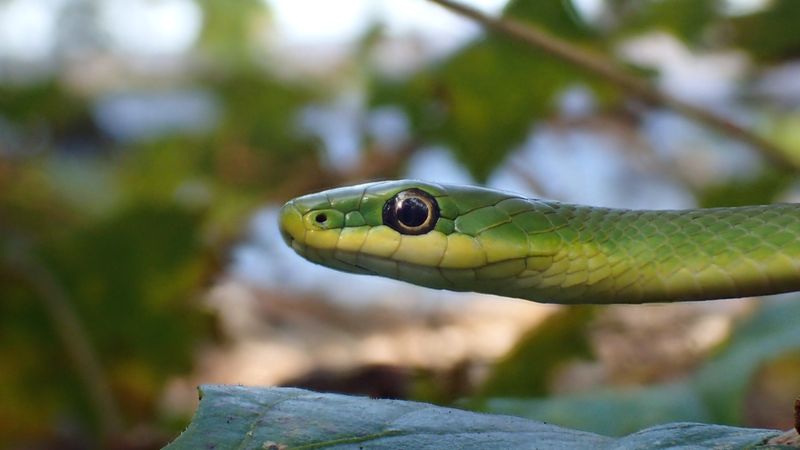
Rough green snakes are aptly named for their bright green color, which provides perfect camouflage in foliage. They’re often spotted in shrubs and trees.
These snakes are harmless and feed on insects, making them beneficial for gardens. Their slender bodies and gentle nature make them a fascinating sight.
Observing one move gracefully through the leaves is like watching a piece of living art. Their presence enriches the biodiversity of your backyard.
Brown Snake
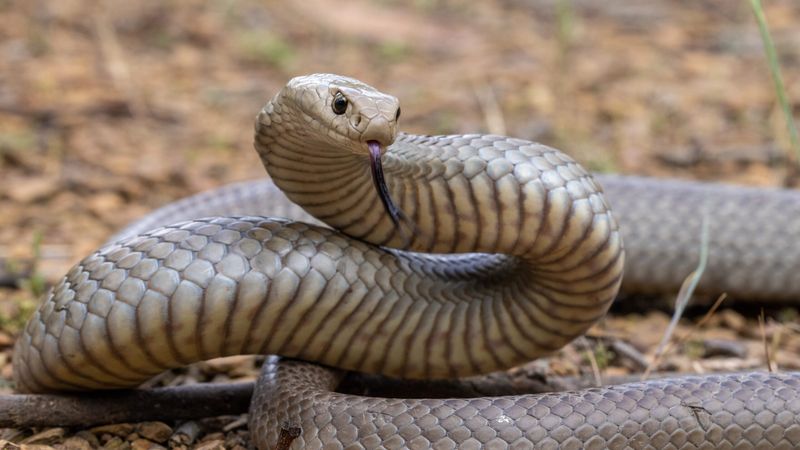
Brown snakes are small, secretive, and well-camouflaged with their earthy brown coloring. They’re commonly found under debris or leaf litter in gardens.
These snakes are non-poisonous and feed on slugs and insects, helping to control garden pests. Their elusive nature makes them less noticeable, but their role is significant.
Spotting a brown snake is a reminder of the unseen life thriving beneath our feet. Their presence is a boon for avid gardeners.
Western Ribbon Snake
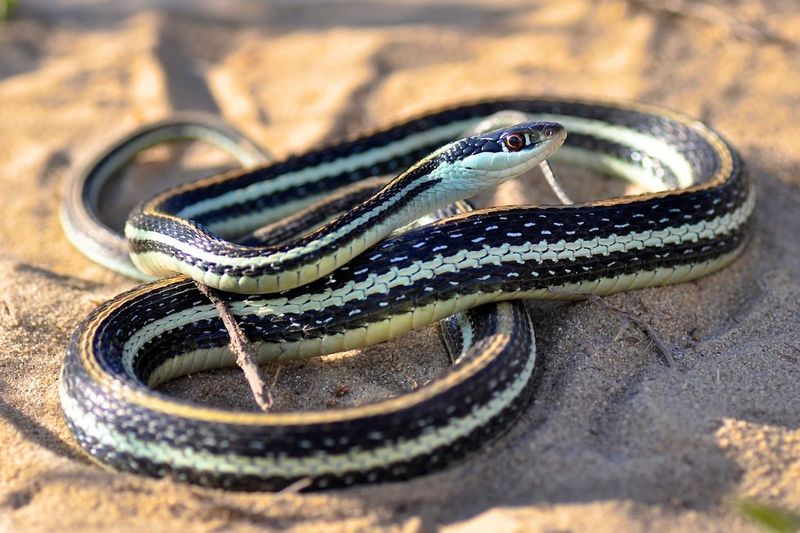
Western ribbon snakes are slender and graceful, known for their long bodies with striking yellow stripes. They’re often found near water or in moist areas.
Non-poisonous and gentle, they feed on small amphibians and fish. Their presence indicates a thriving ecosystem.
Seeing a ribbon snake basking in the sun is a treat for any wildlife enthusiast. Their elegance and beauty add charm to any natural setting.
Dekay’s Brown Snake

Dekay’s brown snake is a small, unobtrusive snake found in gardens and urban areas. Its muted brown and gray scales help it blend into its environment.
These snakes are harmless and feed on small invertebrates like slugs and worms, benefiting gardeners by controlling pests.
Their shy demeanor and small size make them hard to spot, but they play a significant role in maintaining ecological balance. Their presence is a subtle sign of a healthy garden.
Eastern Hognose Snake
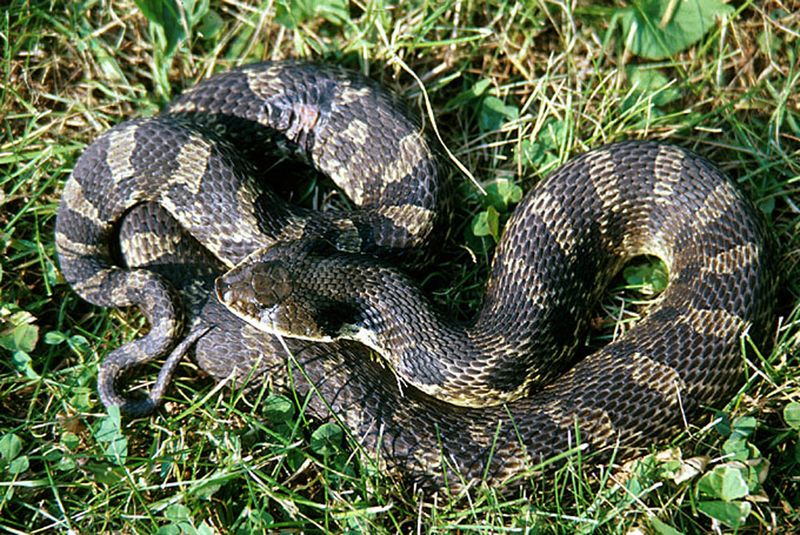
Eastern hognose snakes are known for their unique behavior. When threatened, they may play dead or flatten their necks like a cobra.
These snakes are harmless to humans and feed on amphibians. Their distinct upturned snout and varied coloration make them interesting to observe.
Watching an Eastern hognose snake’s theatrics is a unique experience. These snakes are a testament to nature’s diversity and adaptability.
Smooth Earth Snake
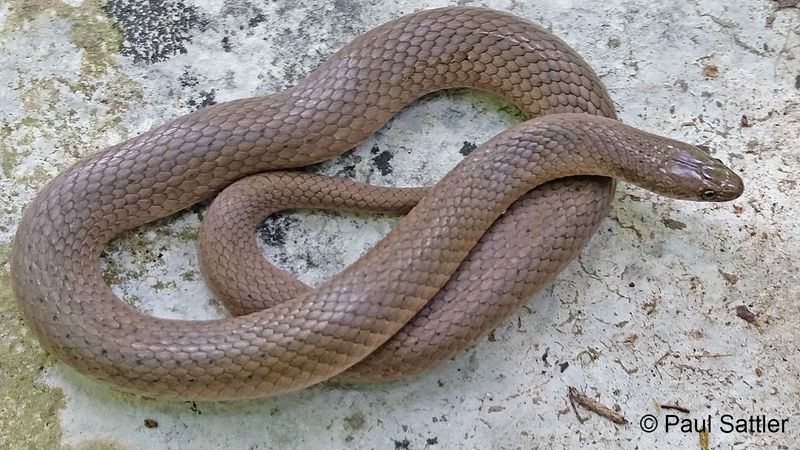
Smooth earth snakes are tiny, secretive creatures found in leaf litter and under rocks. Their smooth, gray scales make them almost invisible.
These snakes are non-poisonous and feed on soft-bodied invertebrates, aiding in pest control. Their elusive nature makes them a rare find.
Discovering a smooth earth snake is like uncovering a hidden gem. Their presence is a quiet testament to the richness of life in humble places.
Common Kingsnake

Common Kingsnakes are the rulers of adaptability, known for their bold black and white banding which gives them a striking appearance. They often bask in open areas, making them relatively easy to spot.
These snakes are renowned for their immunity to the venom of other snakes, and they can often be found controlling the snake population by preying on them.
Despite their intimidating look, Common Kingsnakes are non-venomous and beneficial to have around as they help maintain ecological balance.

